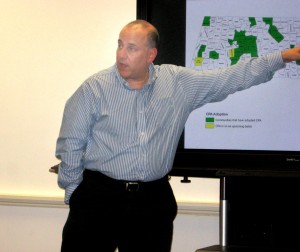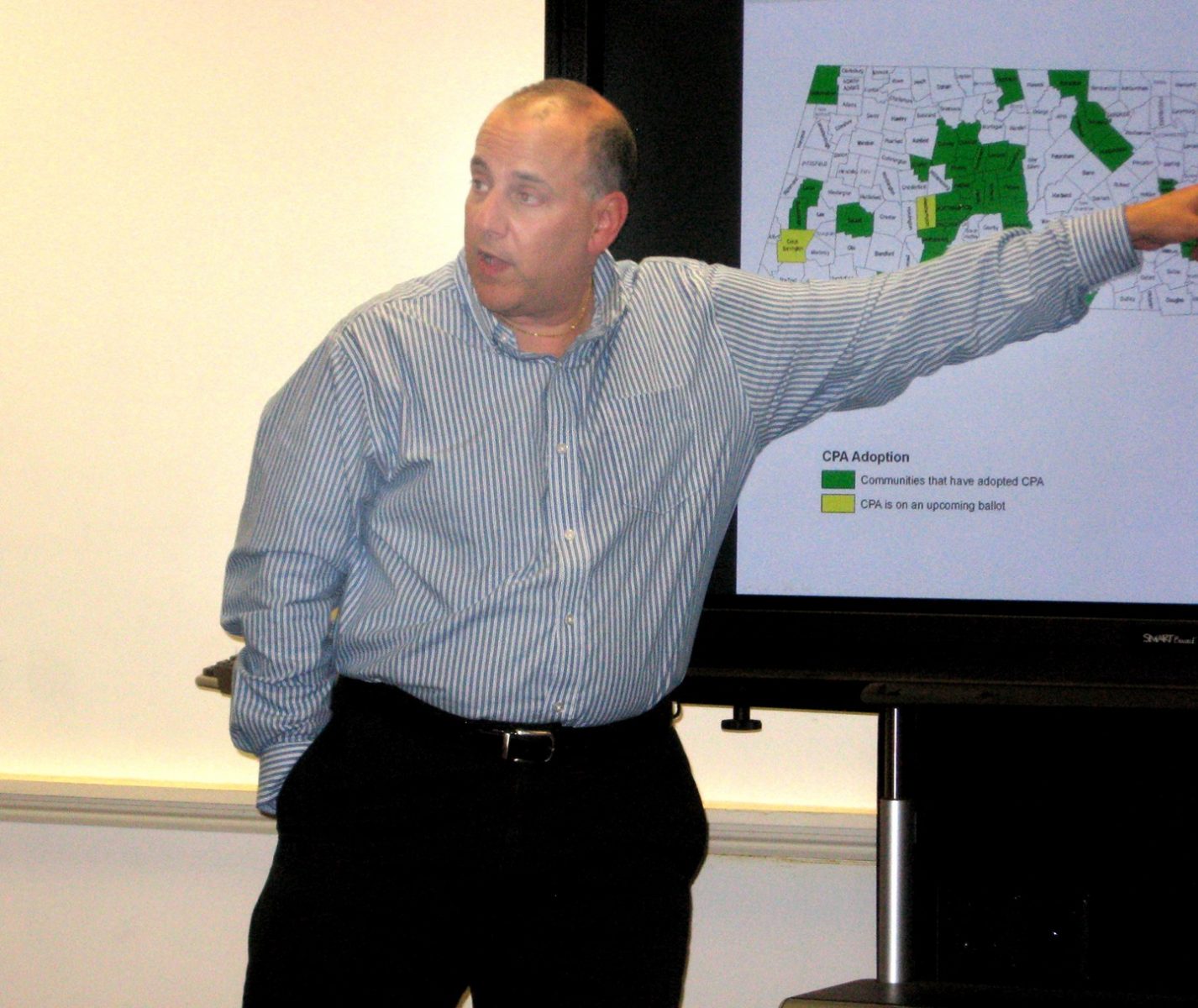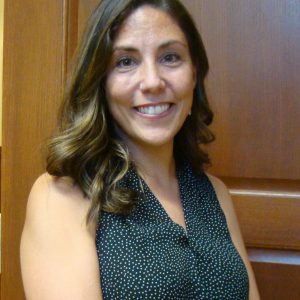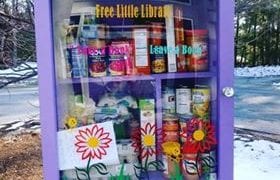
Stuart Saginor, executive director of the Community Preservation Coalition, explains the recent changes in the Community Preservation Act, signed into law in July, to members of the Westfield and Longmeadow Community Preservation committees Thursday night. (Photo by Dan Moriarty)
WESTFIELD – Substantial changes were made to the Community Preservation Law included as part of the state’s 2013 fiscal year budget and signed into law by Governor Deval Patrick on July 8, 2012.
The state Legislature modified the law to both increase funding available to communities and to appeal to a greater number of communities, especially in urban areas of the state.
Stuart Saginor, executive director of the Community Preservation Coalition, explained the impact of the amendments in the CPA revision to members of the Westfield and Longmeadow Community Preservation commissions Thursday night.
The Legislature added $25 million to the CPA trust fund, money used to match CPA revenue raised by communities whose voters approve a surtax on real estate of between 1/2 and 3 percent.
“There are currently 148 CPA communities, about 40 percent of cities and towns in the state. There are only 16 cities in the CPA,” Saginor said. “An additional 9 communities, five towns and four cities have a CPA referendum on the upcoming ballot. In the last two presidential election the CPA (referendums) went 7 for 7 and 10 for 10.”
“The changes in the law and the additional funding are to encourage communities to join,” Saginor said. “There are 73 communities at the full 3 percent, but those are smaller communities that adopted the program right at the start and got the 100 percent match.”
The CPA established the trust that is funded by a $20 fee assessed to all real estate transactions in the state.
The concept of community preservation bill process was initiated in 1987 and signed into law in 2000 by then Gov. A. Paul Cellucci when communities were given the option of adopting the CPA program.
Saginor said that in the early 2000’s the real estate fee generated more than $50 million a year, meaning that communities received a 100 percent match to the surtax collected in that community.
However, the trust fund revenue dropped sharply after 2008 when the Great Recession crippled the real estate market. The trust fund fell to $25 million a year.
The decline in the trust revenue and the increase in the number of communities adopting the CPA program meant that the state matching funds, a key incentive for communities to join the program, dropped as low as 26 percent of locally collected revenue.
Saginor said that the Legislature’s desire was to foster greater membership by adding another $25 million from the state budget surplus to the trust, which will raise the matching state funding to more than 40 percent of locally collected CPA revenue.
The other intent of the Legislature’s 2012 CPA amendment is focused on greater participation by urban communities.
“The Legislature feels it is important for the state to have strong cities, so it married changes to the program, especially in the use of CPA funding for recreational facilities,” Saginor said.
Prior to the most recent CPA amendments, CPA funds could only be used to acquire land and construct new recreational facilities.
Many communities petitioned the Legislature to allow CPA funds to be used for rehabilitation of existing parks and playgrounds and that was addressed by the CPA law revision which does allow use for rehabilitation of existing recreational facilities.
That revision also makes the CPA program more attractive to urban communities where undeveloped open space is not abundant.
Saginor said that in urban settings open space are the parks and playgrounds that can now be improved and rehabilitated with CPA funding.
The revised law also established a new CPA revenue formula that will be attractive to cities. The new law creates a “blended CPA” program under which communities adopt the CAP program with a local 1 percent surcharge, but add funding for other municipal revenue streams to attain the full 3 percent and a larger state matching payment.
Saginor said the local legislative body, a city or town council or town meeting, now have the option to augment the real estate surtax on an annual basis, a vehicle useful to fund larger projects, which would require municipal funding anyway, by leveraging more trust fund money.
Saginor said that the CPA in the Connecticut Valley is unique because of the mix of urban and rural communities.
“In this area you have a lot of CPA communities which are contiguous to each other,” he said. “One of the goals of the CPA is to encourage CPA communities to ‘think big picture’ and consider regional CPA projects.”
Saginor also encouraged the two commissions to update their Community Preservation Plan to incorporate the revisions, in particular to their recreational facilities.
The CPA community plan can then be used a matrix to evaluate projects and allocate funding for projects.
To see the Department of Revenue’s CPA Trust Fund Distribution, click here.








